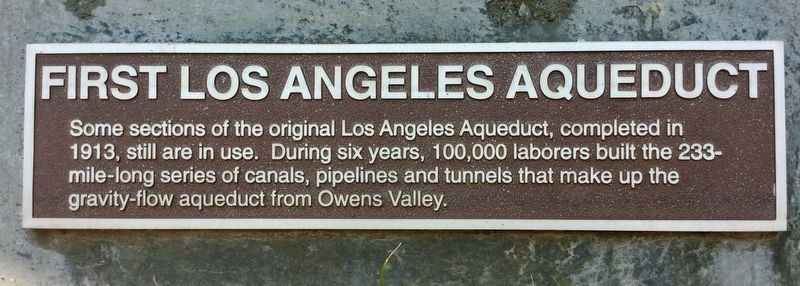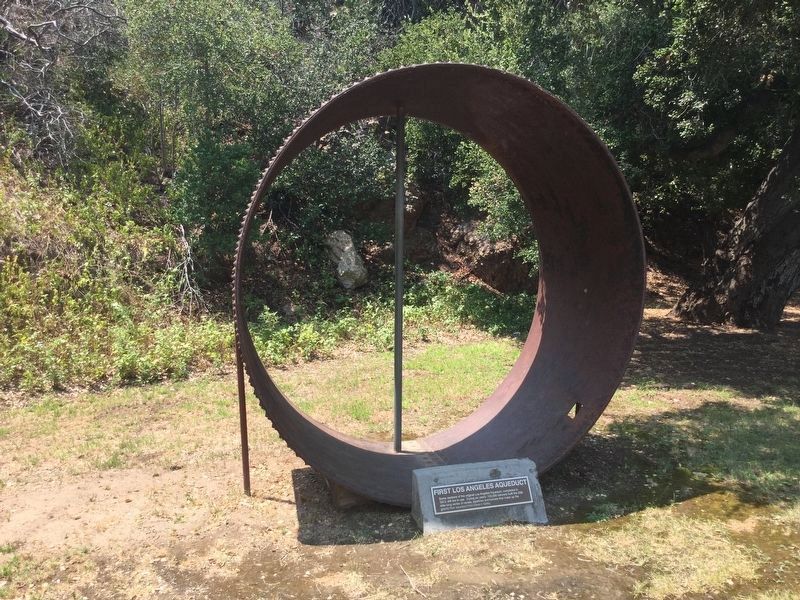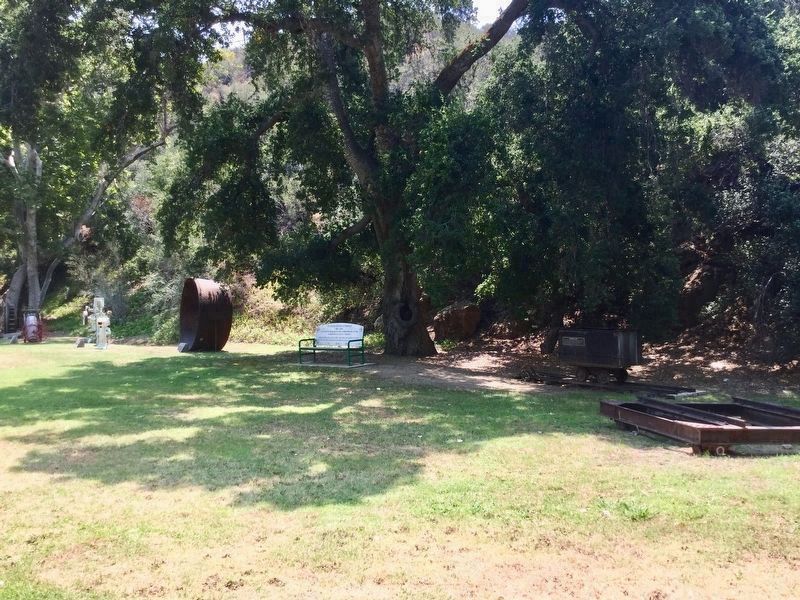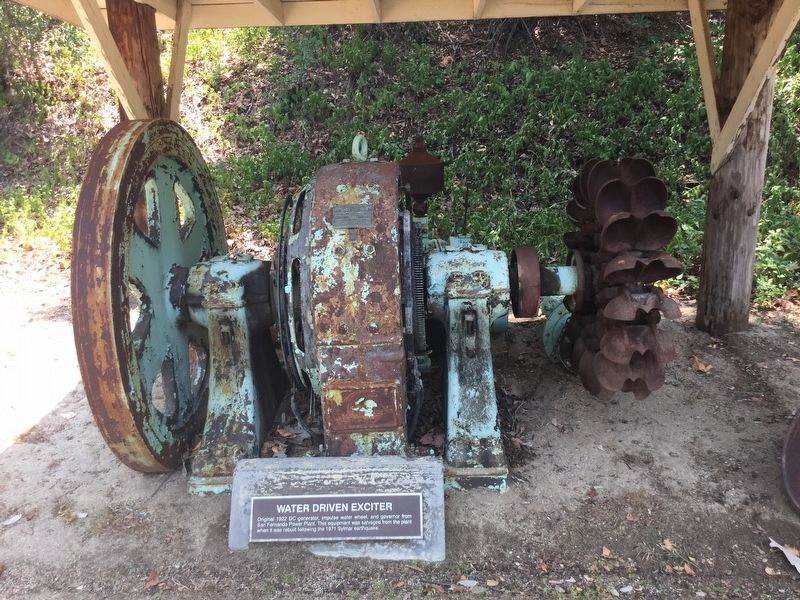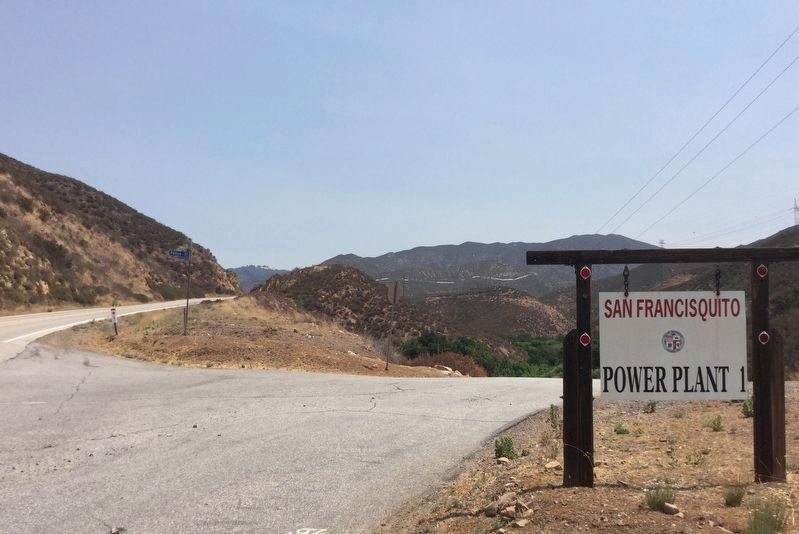Angeles National Forest near Santa Clarita in Los Angeles County, California — The American West (Pacific Coastal)
Power Plant No. 1
First Los Angeles Aqueduct
Erected by Los Angeles Dept of Water & Power.
Topics. This historical marker is listed in these topic lists: Industry & Commerce • Man-Made Features. A significant historical year for this entry is 1913.
Location. 34° 35.199′ N, 118° 27.25′ W. Marker is near Santa Clarita, California, in Los Angeles County. It is in Angeles National Forest. Marker can be reached from Pelton Street, half a mile east of San Francisquito Canyon Road. Located in a small park near Power Plant 1. Touch for map. Marker is in this post office area: Santa Clarita CA 91390, United States of America. Touch for directions.
Other nearby markers. At least 8 other markers are within 12 miles of this marker, measured as the crow flies. St. Francis Dam Disaster Site (approx. 5.4 miles away); St. Francis Dam (approx. 5˝ miles away); Butterfield Overland Mail (approx. 6.6 miles away); Tesoro Adobe (approx. 9.8 miles away); Toney Residence (approx. 10.2 miles away); California Poppy Reserve (approx. 10.7 miles away); Lang Southern Pacific Station (approx. 11.6 miles away); Arthur B. Ripley Desert Woodland State Park (approx. 11.8 miles away). Touch for a list and map of all markers in Santa Clarita.
Regarding Power Plant No. 1. PP-1 began operation in 1917, providing more than 90 percent of Los Angeles’ electricity. 100 years later, PP-1 now supplies less than 10 percent of the city’s power, because of increased population and power needs.
Also see . . . Power Plant 1 history. (Submitted on February 10, 2019.)
Additional commentary.
1. Water & Power
My father, and later myself, had the honor of working at Power Plant 1, as electrical construction & maintenance workers. There was a museum located inside the power plant, but the exhibits have been moved to the lobby of DWP headquarters in downtown Los Angeles.
— Submitted February 12, 2019, by Craig Baker of Sylmar, California.
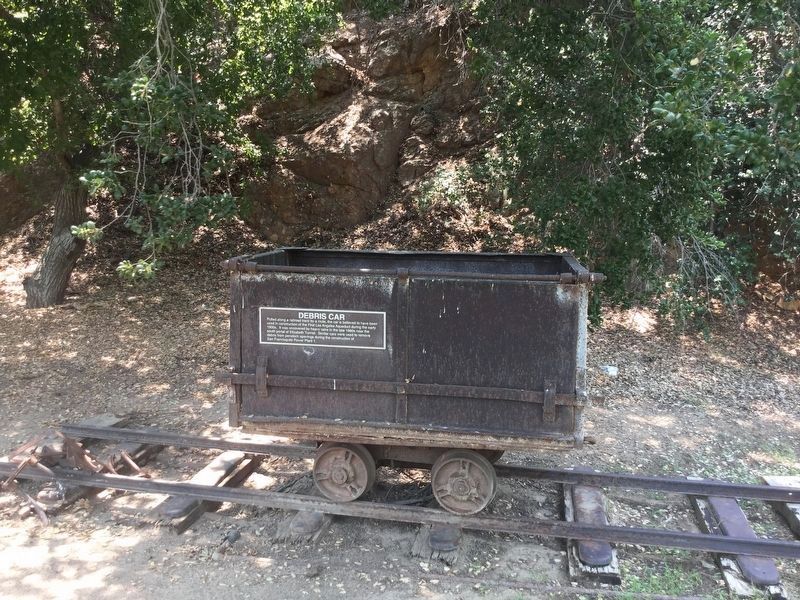
Photographed By Craig Baker, July 28, 2018
4. Debris Car
Pulled along a railroad track by a mule, this car is believed to have been used in construction of the First Los Angeles Aqueduct during the early 1900s. It was uncovered by heavy rains in the late 1960s near the south portal of Elizabeth Tunnel. Similar cars were used to remove debris from penstock openings during the construction of San Francisquito Power Plant 1.
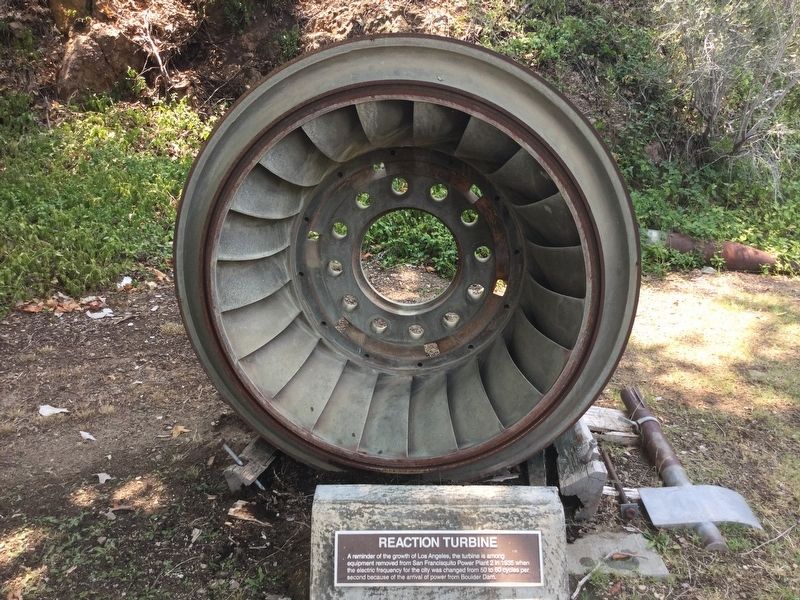
Photographed By Craig Baker, July 28, 2018
5. Reaction Turbine
A reminder of the growth of Los Angeles, the turbine is among equipment removed from San Francisquito Power Plant 2 in 1935 when the electric frequency for the city was changed from 50 to 60 cycles per second because of the arrival of power from Boulder Dam.
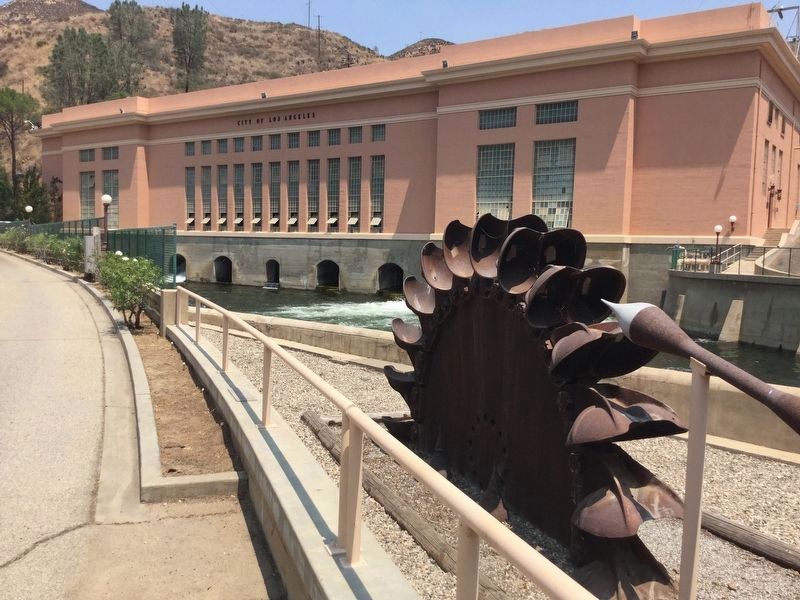
Photographed By Craig Baker, July 28, 2018
7. Pelton Water Wheel
Standing sentinel in front of San Francisquito Power Plant 1 is one of two Pelton wheels from unit five, which was the largest generator of its type in the country when it was installed in 1928. With a combined horsepower of 32,200, the twin water wheels powered the generator that produced 25 million watts of electricity. Unit five was removed from service in 1985.
Credits. This page was last revised on July 3, 2023. It was originally submitted on February 10, 2019, by Craig Baker of Sylmar, California. This page has been viewed 976 times since then and 99 times this year. Last updated on February 12, 2019, by Craig Baker of Sylmar, California. Photos: 1, 2, 3, 4, 5, 6. submitted on February 10, 2019, by Craig Baker of Sylmar, California. 7. submitted on February 11, 2019, by Craig Baker of Sylmar, California. 8. submitted on February 12, 2019, by Craig Baker of Sylmar, California. • Andrew Ruppenstein was the editor who published this page.
